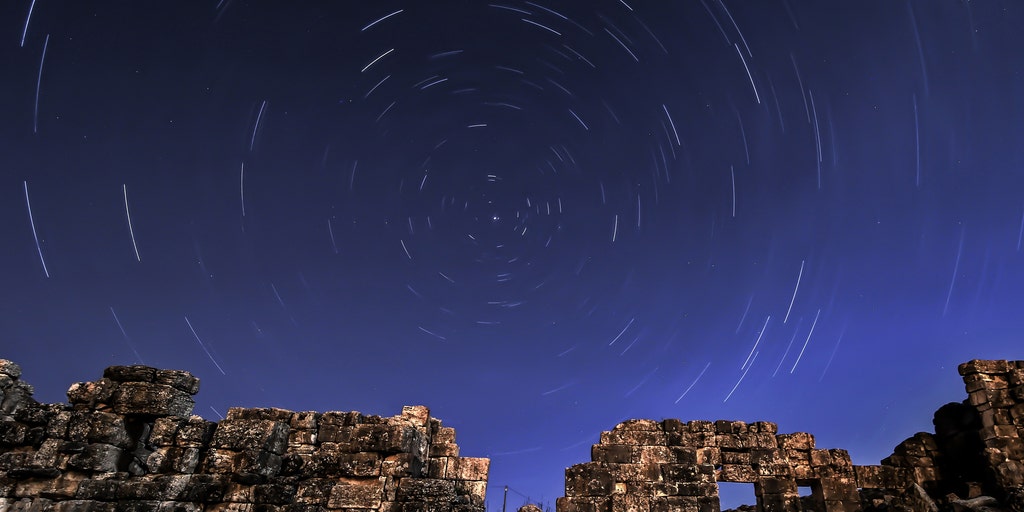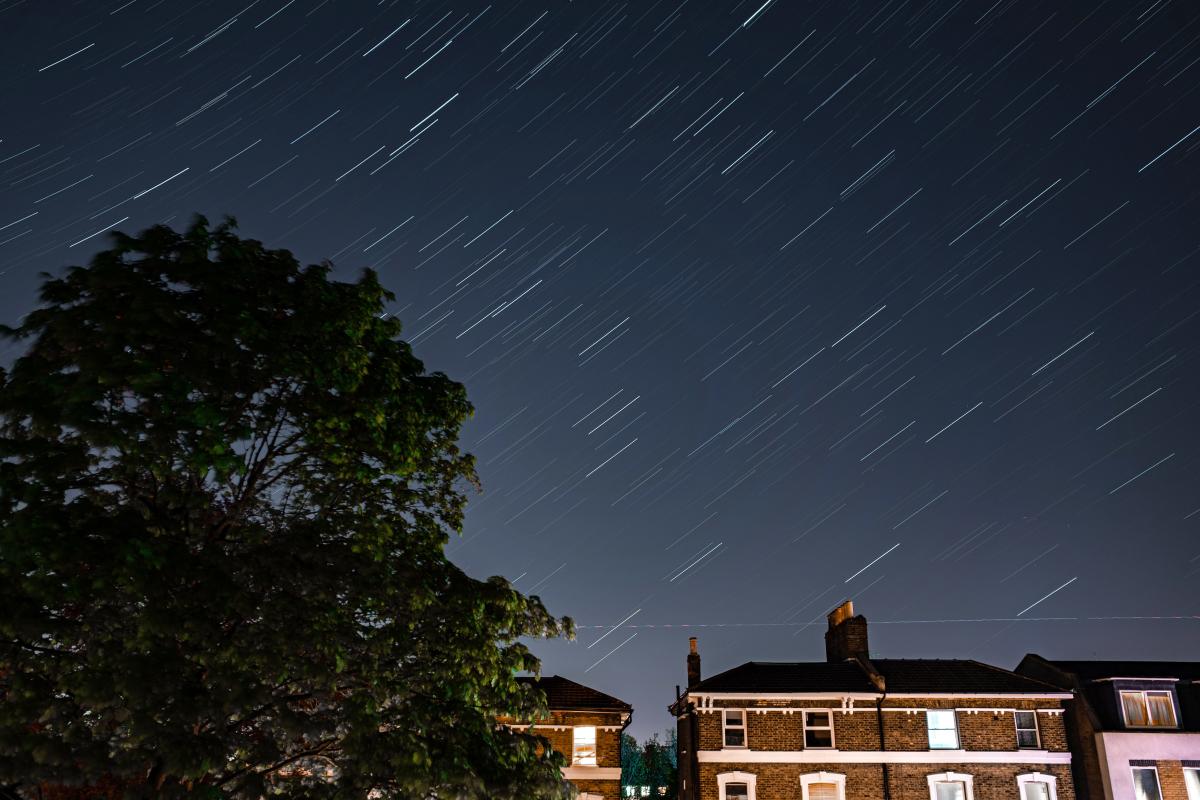
The Lyrid meteor shower peak might be hampered by a nearly 95% full Moon, making it difficult to see this year according to NASA Ambassador Tony Rice. Known for fast and bright meteors, the Lyrids typically produce about 18 meteors per hour during peak activity, with their radiant point in the Lyra constellation near the star Vega. Despite offering a skywatching show under better Moon conditions, the Lyrids face visibility challenges this year. Visitors to eye doctors and online searches surge after total solar eclipses.

The Lyrid meteor shower peaks on April 21-22, with a bright waxing gibbous moon hindering visibility. Named after Comet C/1861 G1 Thatcher, the shower is expected to show 10-20 meteors per hour. Best viewing in the Northern Hemisphere is after moonset but before dawn, away from city lights. Lyrids are debris from Comet Thatcher's orbit of 415 years, observed since 687 B.C., and can surprise with bursts reaching up to 100 meteors per hour.

The April Lyrids are a meteor shower lasting from about April 15 to April 29 each year. The radiant of the meteor shower is located near the constellations Lyra and Hercules, near the bright star Vega. The peak of the shower is typically around April 22–23 each year.The source of the meteor shower are particles of dust shed by the long-period Comet C/1861 G1 Thatcher. The April Lyrids are the strongest annual shower of meteors from debris of a long-period comet, mainly because as far as other intermediate long-period comets go (200–10,000 years), this one has a relatively short orbital period of about 415 years. The Lyrids have been observed and reported since 687 BC; no other modern shower has been recorded as far back in time.The shower usually peaks around April 22 and the morning of April 23. Counts typically range from 5 to 20 meteors per hour, averaging around 10. As a result of light pollution, observers in rural areas will see more than observers in a city. Nights without the Moon in the sky will reveal the most meteors. April Lyrid meteors are usually around magnitude +2. However, some meteors can be brighter, known as "Lyrid fireballs", cast shadows for a split second and leave behind smokey debris trails that last minutes.Occasionally, the shower intensifies when the planets steer the one-revolution dust trail of the comet into Earth's path, an event that happens about once every 60 years. This results in an April Lyrid meteor outburst. The one-revolution dust trail is dust that has completed one orbit: the stream of dust released in the return of the comet prior to the current 1862 return. This mechanism replaces earlier ideas that the outbursts were due to a cloud of dust moving in a 60-year orbit. In 1982, amateur astronomers counted 90 April Lyrids per hour at the peak and similar rates were seen in 1922. A stronger storm of up to 700 per hour occurred in 1803, and was observed by a journalist in Richmond, Virginia:Shooting stars. This electrical phenomenon was observed on Wednesday morning last at Richmond and its vicinity, in a manner that alarmed many, and astonished every person that beheld it. From one until three in the morning, those starry meteors seemed to fall from every point in the heavens, in such numbers as to resemble a shower of sky rockets ...Another such outburst, and the oldest known, the shower on March 23.7, 687 BC (proleptic Julian calendar) was recorded in Zuo Zhuan, which describes the shower as "On the 4th month in the summer in the year of xīn-mǎo (of year 7 of King Zhuang of Lu), at night, (the sky is so bright that some) fixed stars become invisible (because of the meteor shower); at midnight, stars fell like rain." In the Australian Aboriginal astronomy of the Boorong tribe, the Lyrids represent the scratchings of the Mallee fowl (represented by Vega), coinciding with its nest-building season.

The Lyrid meteor shower is set to peak in rural areas across the US starting this weekend, with experts predicting up to 15-20 meteors per hour. The Eta Aquariid meteor shower is expected to be most visible in the Southern US at around 3 a.m. from May 6 to May 8, with a forecast of around 50 meteors per hour in the Southern Hemisphere and 30 per hour in the Northern Hemisphere.

Lyra (Latin for 'lyre', from Ancient Greek: λύρα; pronounced: LY-rə) is a small constellation. It is one of the 48 listed by the 2nd century astronomer Ptolemy, and is one of the modern 88 constellations recognized by the International Astronomical Union. Lyra was often represented on star maps as a vulture or an eagle carrying a lyre, and hence is sometimes referred to as Vultur Cadens or Aquila Cadens ("Falling Vulture" or "Falling Eagle"), respectively. Beginning at the north, Lyra is bordered by Draco, Hercules, Vulpecula, and Cygnus. Lyra is nearly overhead in temperate northern latitudes shortly after midnight at the start of summer. From the equator to about the 40th parallel south it is visible low in the northern sky during the same (thus winter) months.Vega, Lyra's brightest star, is one of the brightest stars in the night sky, and forms a corner of the famed Summer Triangle asterism. Beta Lyrae is the prototype of a class of binary stars known as Beta Lyrae variables. These binary stars are so close to each other that they become egg-shaped and material flows from one to the other. Epsilon Lyrae, known informally as the Double Double, is a complex multiple star system. Lyra also hosts the Ring Nebula, the second-discovered and best-known planetary nebula.

A meteor shower is a celestial event in which a number of meteors are observed to radiate, or originate, from one point in the night sky. These meteors are caused by streams of cosmic debris called meteoroids entering Earth's atmosphere at extremely high speeds on parallel trajectories. Most meteors are smaller than a grain of sand, so almost all of them disintegrate and never hit the Earth's surface. Very intense or unusual meteor showers are known as meteor outbursts and meteor storms, which produce at least 1,000 meteors an hour, most notably from the Leonids. The Meteor Data Centre lists over 900 suspected meteor showers of which about 100 are well established. Several organizations point to viewing opportunities on the Internet. NASA maintains a daily map of active meteor showers.

Comet C/1861 G1 (Thatcher) is a long-period comet with roughly a 422-year orbit that is expected to return around 2283. It was discovered by A. E. Thatcher. It is responsible for the April Lyrid meteor shower. Carl Wilhelm Baeker also independently found this comet. The comet passed about 0.335 AU (50.1 million km; 31.1 million mi) from the Earth on 5 May 1861 and last came to perihelion (closest approach to the Sun) on 3 June 1861.C/1861 G1 is listed as a long-period "non-periodic comet" because it has not yet been observed at two perihelion passages. When it is seen to come back around 2283, it should receive the P/ designation.The comet is the parent body of the April Lyrids meteor shower.





Taylor Nicioli, Ashley Strickland

Yahoo! News

Yahoo! News

Fox News

CBS News

Shivali Best

NPR

PANORA

Wikipedia

PANORA

Wikipedia

Wikipedia

Wikipedia